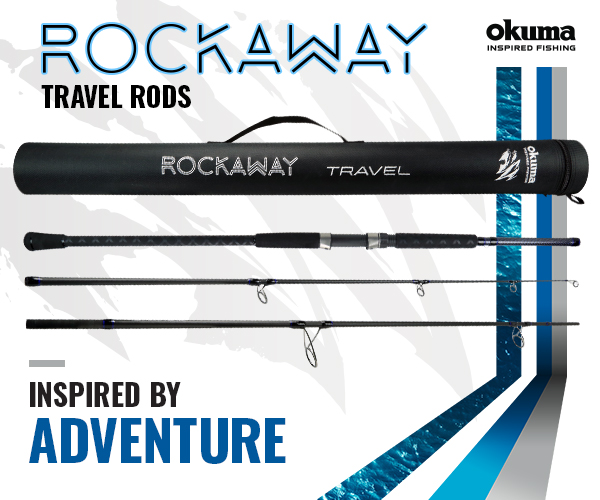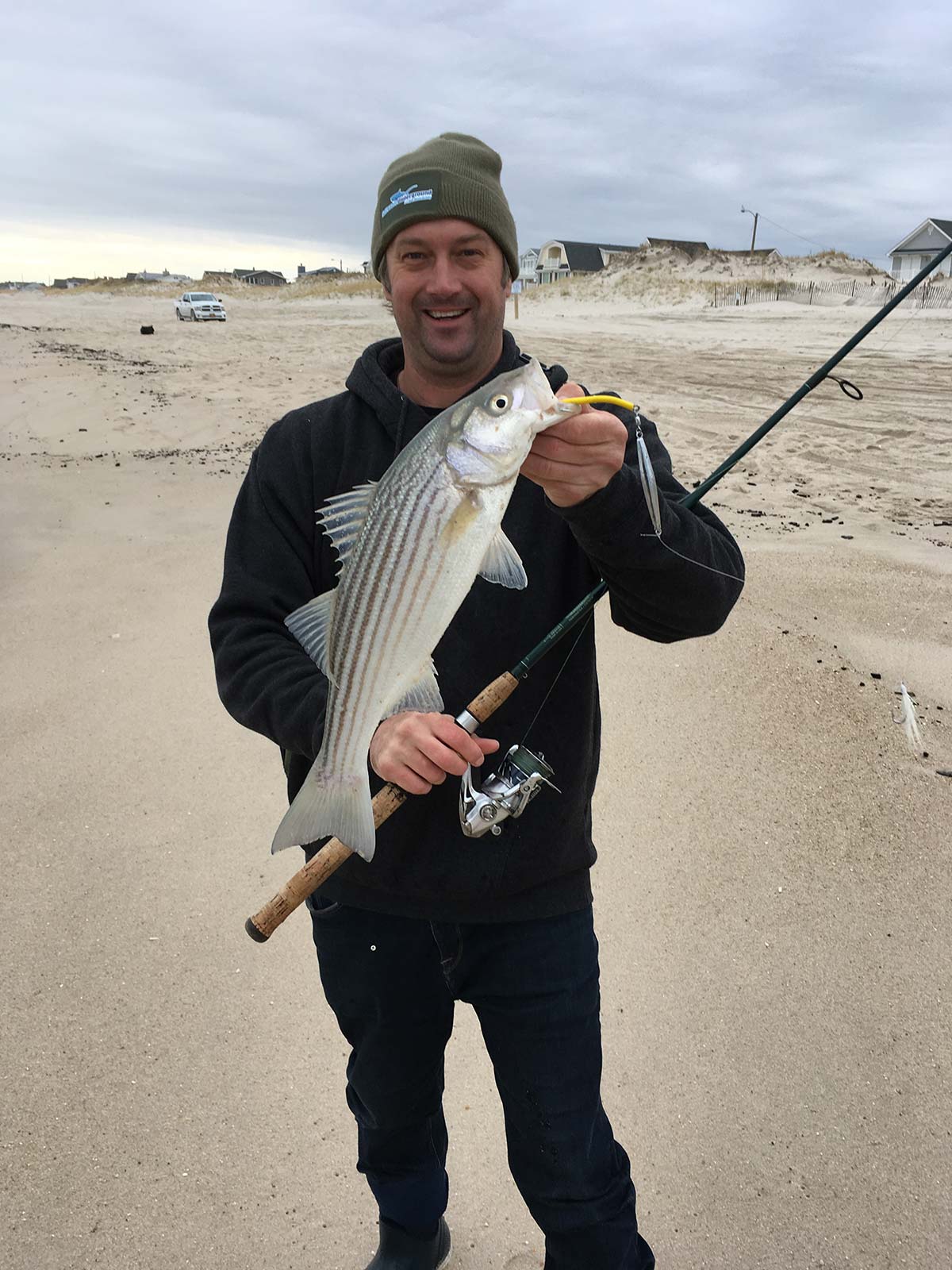
Pack up and follow the fall run of stripers to extend your surf season well past the Turkey Day feast.
It’s November and New Englanders are pretty much glancing in the rear view mirror as the striper season fades into the distance, looking forward to next spring to pursue their fare. Not in New Jersey. November brings the peak of the bass run along the Garden State shores and surfcasters are in their glory from November through December with bass generally averaging from 24 to 43 inches in the suds. As a New Englander, want to continue your bass fix? Here’s how to plan a weekend jaunt to the Jersey Shore surf.
Spot Earn
Jersey’s 128 miles of coastline offers up plenty of turf to cover for surfcasting the fall run. The main stretch of productive sand runs from Sandy Hook down to Cape May, and there are dozens of spots in between containing prolific surfcasting opportunity. Many towns offer up beach buggy passes, and if you’ve got your beach buggy permits, (go to the NJ Beach Buggy Association www.njbba.org for all the info) you’ll have more access to follow schooling fish and try out new areas if one isn’t producing for you. State parks are aplenty for the public to access including Sandy Hook, Seven Presidents Park along jetty country in Long Branch, Island Beach State Park, Holgate, Brigantine, Corson’s Inlet and Cape May. Daily fees are affordable to get you access to some pristine shorelines to work over. Sleepy Jersey Shore towns will have plenty of parking available now that the Bennies are gone, plus there are no daily beach fees to access any township beaches, so do a little research at the local town tackle shops (See my weekly Beach Talk column in the New Jersey edition of The Fisherman) to see what beaches are fishable and producing.
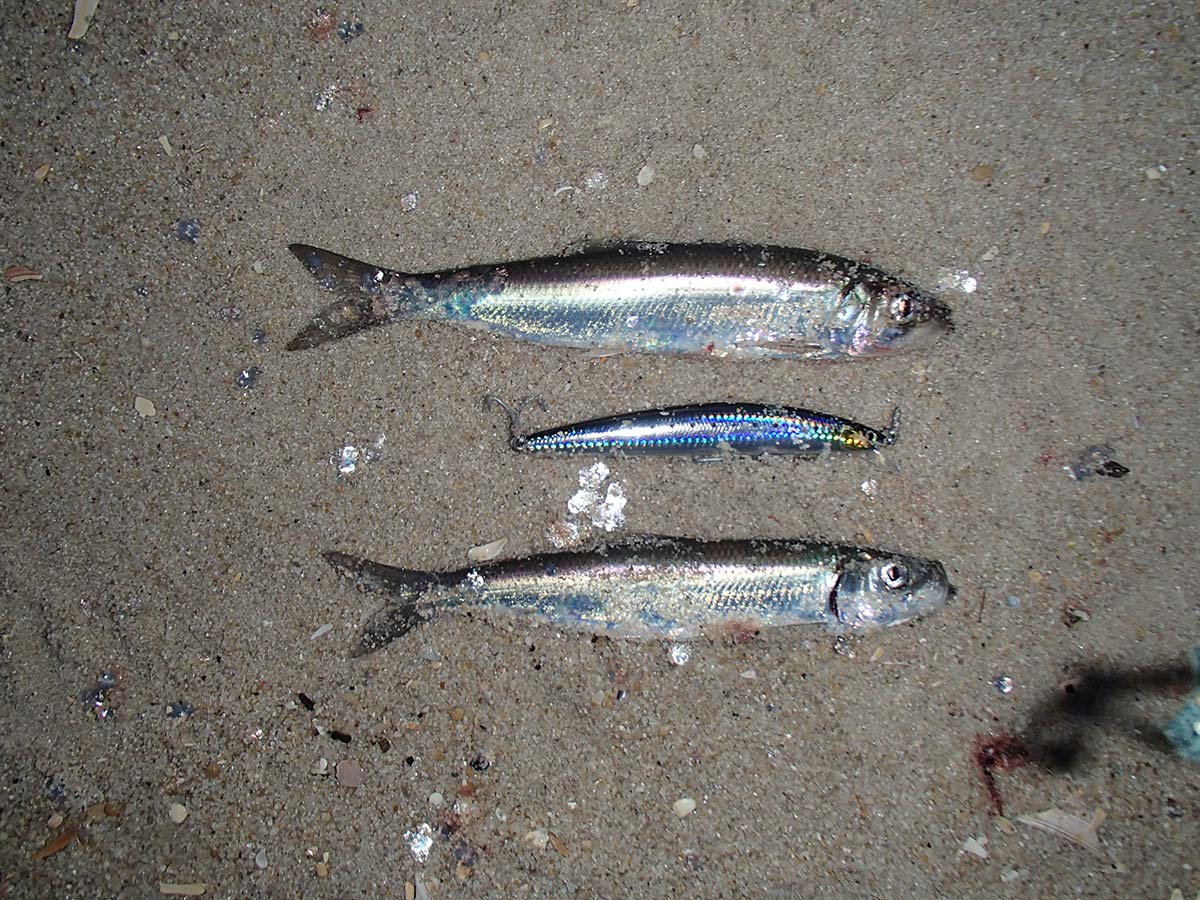
Break Up The Coast
There is relatively little hard structure in Jersey, except for Jetty Country, the few unsubmerged jetties leftover from beach replenishment and the inlet area boulders and jacks, but soft structure abounds in the form of deep cuts, sloughs, holes and sandbars which attract and hold fish. Focus on a game plan. Manage a stretch of coastline in regard what you think you can accomplish in a day’s time. My turf runs from Point Pleasant down through IBSP in a day’s work. Others may stick in the Sandy Hook region or focus their efforts in Jetty Country from Sea Bright down through the Manasquan Area. LBI can be good along any of the small town sands. Brigantine Beach holds plenty of shoreline to cover during the course of a day. The Cape May beaches of Poverty Beach to Cape May Point then Reeds Beach and the Cape May Inlet jetty can be covered effectively in a day. Break the coast into sections and have a target area to work over, this way you don’t overwhelm yourself in chasing cell phone and internet reports and can focus on the task at hand.
Scale Down
Those 12-foot rods and 14000-class reels you use in Montauk or Block Island? Leave ‘em at home. As most of the stripers patrolling the shores in November and December will run from 5 to 20 pounds, you can effectively tangle with them on much lighter tackle, including fly rods. I personally use a St. Croix TIS76MF matched with a Shimano Stradic 5000 spooled with 30-pound Power Pro braided line and that outfit can handle bass up to 20 pounds effectively. Leader material is usually anywhere from 25- to 40-pound Seaguar Fluorocarbon. Fly rods can be 8 to 9 weight size.
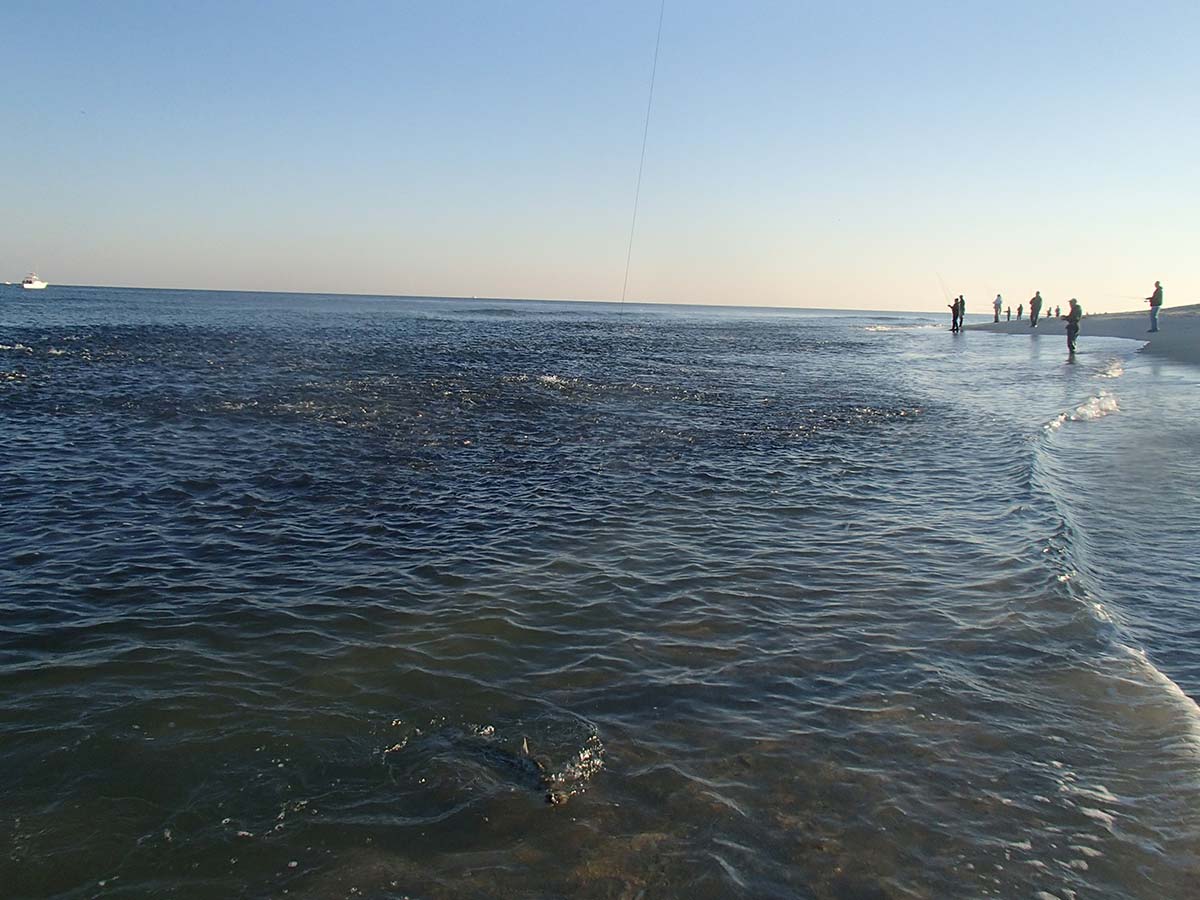
Prevalent Bait
In the past decade or so, the predominant bait running through Jersey in November revolves around peanut bunker, some adult bunker, rainfish and sand eels. Late November and into December sand eels and herring will be the major bait to mimic. That said, there’s a place and time for big wooden lures, and this generally isn’t it. In general, smaller shads, metals, plugs and poppers fit the bill.
Here’s a common surf bag checklist for the Jersey Shore fall run: Bomber A-Salt plugs, Daiwa SP Minnows, 3/8 to 1-ounce bucktails, 3- to 6-inch Storm Shads, Tsunami Sand Eels, Ava jigs from 007 to A27 size, Stillwater Smack It poppers, Tsunami Poppers, Savage Gear Glass Minnow jigs, 25- to 40-pound Seaguar Fluorocarbon leader, 75-pound TA clips, 75-pound barrel swivels.
A Day’s Gameplan
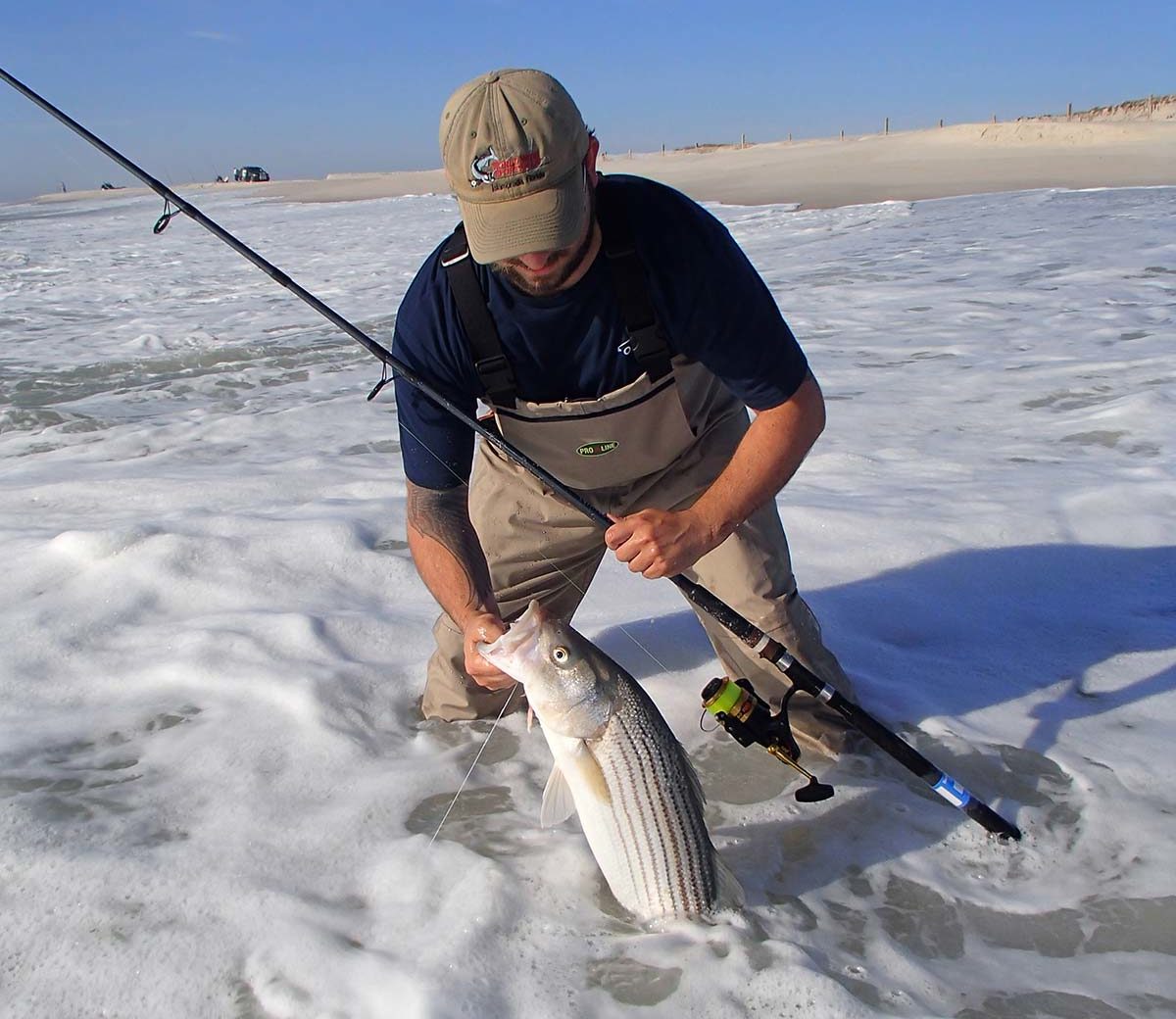
Opportunity abounds to keep the fall run cruising well past Christmas and even into the New Year. By far November is the finest month in the Garden State to tangle with surf stripers. The Island Beach Motor Lodge right outside of Island Beach State Park is a common crash pad for surfcasters, and many shore town motels offer off season rates that are affordable for a three-day junket. If you’re looking for a little guidance, there is nothing better than hooking up with a local guide; look no further than Nick Honachefsky for one of the best. You can contact Nick through his website, www.saltwaterunderground.com as he runs limited surf charters. In the very least he can surely point you in the right direction, just be sure to tell him you saw his article here in The Fisherman!
Understand that this can vary greatly depending on where you are fishing, time of day, tides, winds and wave height, but in general this is how I approach the November suds. I take a three-pronged attack to follow when fishing November. Before the sun comes up during that magical predawn hour (4AM to 6 AM), my usual first offering is the standard black Bomber and white bucktail 3/0 teaser combo. Cast out and reeled-in at a snail’s pace, hits come often in the dark when a bass sneaks up on the slow-moving lure. Once the sun is up, I switch up to an Ava 007 to Ava 17 jig and bucktail teaser combo or a Tsunami Sand Eel. Sand eels unearth themselves when the sun cracks the horizon and a sand eel imitation cast and retrieved at a moderate pace starts it out, then if no hits come, I slow it down and drag the Ava jig or Tsunami eel along the sand bottom. After that bite seems to slow, once the sun is higher in the sky, the third attack is with a paddletail Storm shad or Kettle Creek rubber bait. The profile seems too deadly for bass to pass up in the late morning and afternoon hours. Cast out and retrieve at a moderate pace. At any given time of day, breaking schools of bass blowing up bait will often require you to switch over to a popper to trick the lit-up linesiders. Once night falls, the bite lights up big time. Nighttime sorties are mega-productive and black or blurple plugs will get whacked with reckless abandon. Some nights you can be into well over 30 fish, and during the day, schoolies can number over 100 if you fish it hard.
